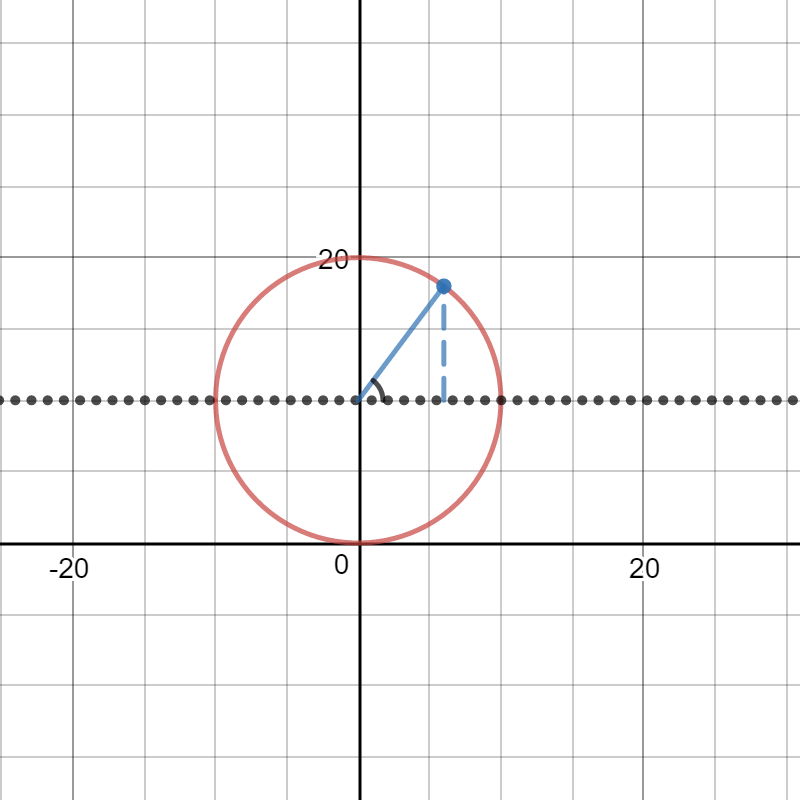A ferris wheel with a radius of 10 m is rotating at a rate of one revolution every 2 minutes How fast is a rider rising when the rider is 16 m above ground level?
1 Answer
Great problem. It's a new-to-me kind of related rates.
Explanation:
Here is a sketch.

I'm sorry I can't label it clearly, but I'll talk through it.
The wheel is tangent to the ground and I've drawn a center line at
The rider is at the blue dot.
The radius (from
The height above the line
The central angle from the positive horizontal
The height above ground is
That is the same as finding
So we have:
Variables
Rates of change
Equation relating the variables:
Solve the problem:
When
So at that point
Notes for students
I've taught university and college calculus for years, but I had never seen this problem. So I had to approach it fresh.
You may find help and encouragement from these notes.
I started with a sketch of the wheel with its rider and the angle of elevation from the bottom of the wheel.
That led to some rather ugly calculations They could be done, but they were challenging.
In thinking about the rate of change of the angle I realized that I'd be better off staring my picture when the rider is 10 m above the ground.
Then the height became


